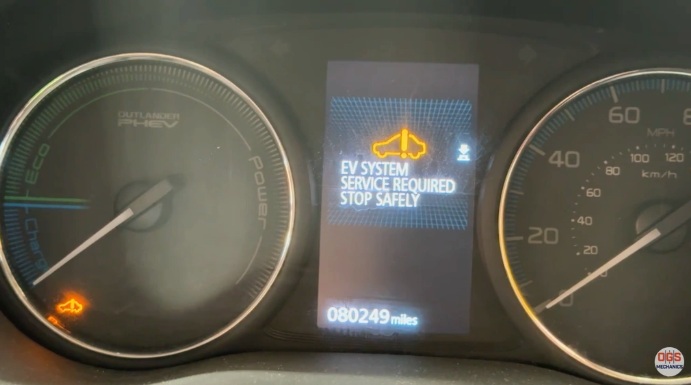A Mitsubishi Outlander PHEV that was once “neglected” for over half a year due to a critical fault was later fixed by replacing a £0.5 part.
Specifically, this Mitsubishi Outlander PHEV is of an older generation and had approximately 128,000 km on the odometer. It experienced a high-voltage system fault that prevented the engine from starting and also disabled level 1 charging. The vehicle was taken to OGS & Mechanics, a specialized hybrid and EV repair workshop known for tackling challenging cases.
Upon scanning for errors with an OBD reader, a series of fault codes appeared, indicating issues with the current sensor and the leakage sensor, both located within the high-voltage battery. Technicians initially suspected that the entire battery pack would need to be disassembled for inspection. However, instead of rushing into major surgery, the mechanics at OGS & Mechanics reverted to basic diagnostic techniques: examining the electrical circuit diagram. They discovered that both sensors shared a common power source and had a fuse located under the hood. Upon inspection, they found that this 7.5A fuse had blown. Replacing it with a new one costing just £0.5 restored normal operation to the entire Mitsubishi Outlander PHEV high-voltage system, including the charging function.
The cause of the fuse blowing remains unknown, and the issue could recur if there are other underlying problems in the system. Nonetheless, this incident demonstrates that repairing PHEV or EV vehicles does not always require expensive equipment or complicated interventions. Sometimes, basic knowledge and experience can be the key to success.
This story also helps dispel the notion that electric or hybrid vehicles are a write-off when they encounter issues. In many cases, the problem may lie with a small component, as long as the technician knows the right approach to take.














































